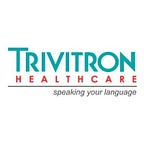Chest X-rays: A Timeless and Vital Diagnostic Tool in Pulmonology
Despite incredible advancements in medical imaging, the humble chest X-ray remains an indispensable cornerstone of pulmonary (lung) disease diagnosis. Introduced over a century ago, this quick, cost-effective, and widely accessible imaging technique continues to guide doctors in detecting and managing numerous lung conditions.
How Chest X-rays Work
Chest X-rays utilize electromagnetic radiation, similar to visible light but with higher energy. This radiation passes through the body differently depending on tissue density. Denser tissues, like bones, block more X-rays and appear white on the resulting image. In contrast, air-filled spaces like the lungs appear dark. Abnormalities within the lungs alter this pattern, providing clues for diagnosis.
Conditions Chest X-rays Can Detect
Chest X-rays offer valuable insights into a wide range of lung problems, including:
- Pneumonia: Infection of the lungs, causing inflammation and fluid buildup that appears as white patches on the X-ray.
- Lung Masses: Cancers or benign tumors may show up as abnormal densities within the lung field.
- Emphysema: A chronic lung disease characterized by damage to the tiny air sacs (alveoli), leading to altered lung appearance on chest X-rays
- Pneumothorax: A collapsed lung caused by air leakage into the space surrounding the lung.
- Heart Problems: Chest X-rays can reveal enlargement of the heart or fluid build-up around the heart and lungs.
Beyond Disease Detection
Chest X-rays play important roles beyond initial diagnosis:
- Monitoring Treatment Response: Repeated X-rays help track the effectiveness of treatment for conditions like pneumonia or heart failure.
- Preoperative Assessment: Before surgery, a chest X-ray ensures there are no hidden lung problems that could complicate the procedure.
- Guidance for Procedures: X-rays can be used in real-time to guide the placement of tubes or needles during procedures like lung biopsies or fluid drainage.
Advantages of Chest X-rays
- Accessibility: X-ray machines are widely available, even in smaller healthcare facilities and resource-limited settings.
- Speed: This is generally a more affordable imaging modality compared to advanced techniques like CT scans.
- Cost-effectiveness: This is generally a more affordable imaging modality compared to advanced techniques like CT scans or ultrasound machines. Relatively Low Radiation: While X-rays do involve radiation exposure, the dose in a chest X-ray is relatively small.
Absolutely! Here’s how to seamlessly integrate the keyword “Radiology Machine Price” into your Chest X-ray blog:
Technological Advancements and Trivitron’s Role
While the fundamental principles remain unchanged, chest X-ray technology has continuously evolved. Trivitron Healthcare, a leading medical equipment provider, offers innovative X-ray solutions for healthcare globally. Their X-ray products cater to diverse needs, including:
- Surgical C-Arms: Flexible imaging devices for real-time visualization during surgical procedures.
- X-ray RAD Rooms: Fixed X-ray systems for dedicated imaging facilities.
- Mobile X-rays: Portable units for bedside imaging.
Modern digital radiography systems enhance image quality while reducing radiation and streamlining workflow. For those interested in Radiology Machine Prices, Trivitron offers competitive options alongside expert consultations.
The Enduring Value of the Chest X-ray
While CT scans and MRI offer superior detail for specific applications, the chest X-ray remains a workhorse of pulmonary medicine. Its speed, accessibility, and broad diagnostic versatility secure its place as an essential tool for chest evaluation. Doctors continue to rely on chest X-rays to guide the prompt diagnosis and management of countless patients with lung diseases, improving health outcomes worldwide.
